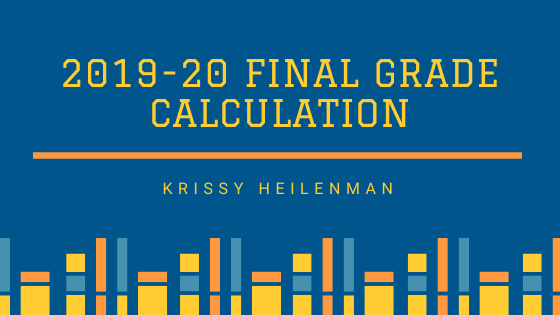EHS implements new final grade calculation for 2019-20 school year

April 22, 2020
After Pennsylvania Gov. Tom Wolf announced on April 9 that all schools would be closed for the remainder of the 2019-20 school year, EPSD administrators were left to determine how final grades would be calculated. On April 20, Emmaus High School moved into “Phase Three” of its Continuity of Learning Plan. This entails mandatory participation in online instruction for all students.
“Weekly attendance is being taken based on student participation,” a newsletter sent out to EHS families stated. “This means that students who submit assignments by the due date are considered ‘present,’ while those who do not submit assignments are considered ‘absent.’”
The start of “Phase Three” also marks the start of the fourth marking period. In this marking period, assignments will be entered into PowerSchool as ‘complete’ or ‘incomplete,’ and teachers will provide feedback for students who may resubmit work based on this feedback.
For final grades, the first, second, and third marking periods will be 30 percent of a student’s grade while the midterm exam will be 10 percent. For the fourth marking period, students who complete 60 percent or more of their assignments will receive a ‘pass’ and if they complete less than that, they will receive a ‘fail.’ The pass or fail grade will appear on report cards, but will not be factored into the final grade, nor will it appear on transcripts.
In order for students to receive credit for work completed during the fourth marking period, they are eligible to earn as much as five percentage points towards their final grade. These points will be given based on a rubric.
“The amount of additional credit awarded will be based on their submission of assignments, active participation, and achievement of learning objectives,” the newsletter said.
For .5 and .25 credit classes in the second semester, the final grades will be pass/fail. These grades will not be factored into one’s GPA; however, students will still receive credit for these classes.
When creating this plan, EHS principal Dr. Kate Kieres and other members of administration communicated with the PA Department of Education and other districts throughout the Lehigh Valley to ensure EHS uses the best possible final grade calculation method.
“ [We] selected this plan because it ensures that students’ final course grades will not be adversely affected if their current circumstances negatively impact their ability to participate at the level that they would under normal circumstances,” Kieres said. “It also allows students an opportunity to improve their final grades if they complete assigned work and achieve the learning objectives established by their teachers, considering the fact that their year was cut short, and along with that, their ability to improve their grades during MP4.”
In a Twitter poll of 36 students, 53 percent said the new grading system was good; however, 47 percent said the grading system could be better.
Senior class president Mark Magee recognizes the negative and positive aspects of the new grading system.
“I think the new way to calculate grades may make it more difficult to achieve a certain grade in a class,” Magee said. “If you were right on the cusp and had one bad marking period that was an outlier it now holds much more weight now due to the new system. For a majority of people who aren’t in the scenario, I think it makes classes much easier and less stressful while still teaching the material that we will need to know for college classes next year.”
Josh Fritz and Erin O’Neil, class presidents of the classes of 2021 and 2022, respectively, believe that, given the circumstances, the way grades will be calculated for the remainder of the year is fair.
“Most of the teachers are trying their best to put forth all the necessary work that is needed for us to complete the rest of the courses which is great,” Fritz said. “Even though this may not be the most ideal way of learning, everyone is doing the best they can in regards to COVID-19. We are all in the same boat and all we can do from here is hope for the best.”
O’Neil also recognizes that some students may have trouble learning through nontraditional methods, and grading the fourth marking period on participation avoids this issue.
Fritz sees his peers responding in different ways.
“Some of my classmates are thinking that since what teachers are able to do is so limited, that the grading is the best way to make sure the students don’t feel overwhelmed,” Fritz said. “Other students still seem to be stressed out about this new grading and way of learning. Overall this pandemic is a learning curve for everyone and will definitely take some getting used to.”
For all students, the last day of school will be Thursday, June 11.
“Our goal between now and the end of the school year is to help our students continue with sequential, meaningful instruction in a way that is as equitable as possible and responsive to the needs of students and families,” Kieres said. “We want to be fair in recognizing that not all students have the same access to their education right now, and many students and their families are experiencing hardship and trauma during this difficult time.”










